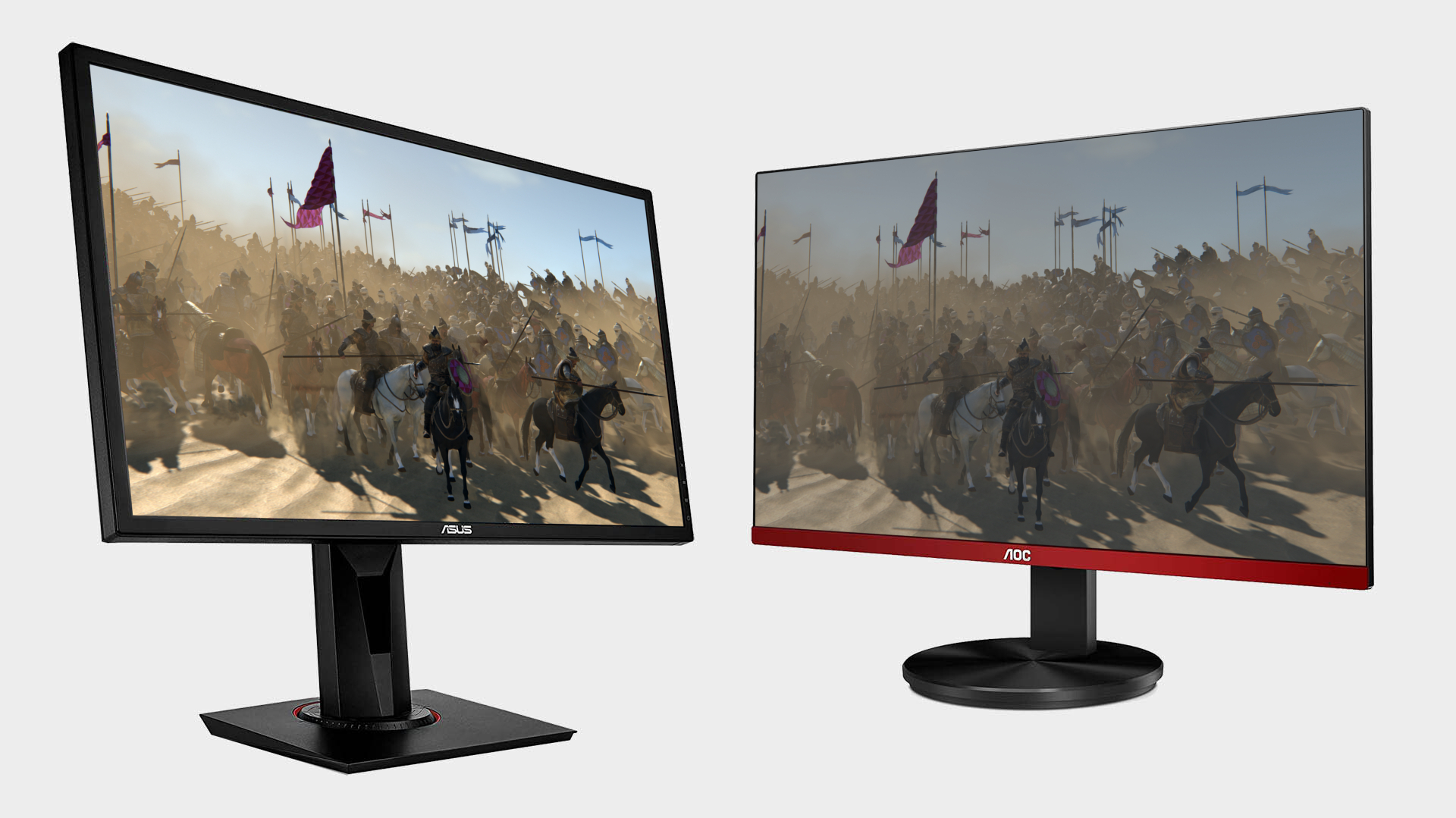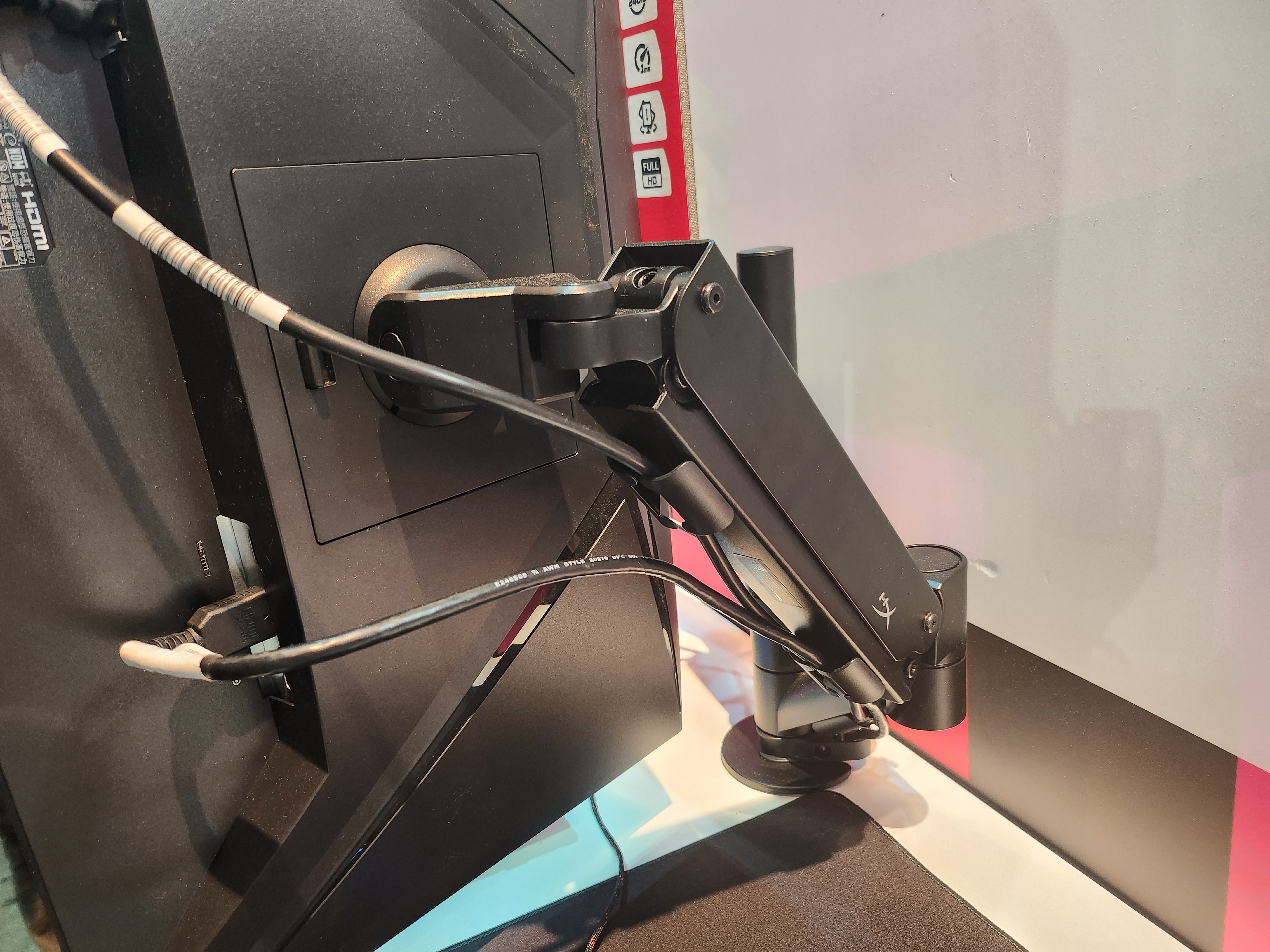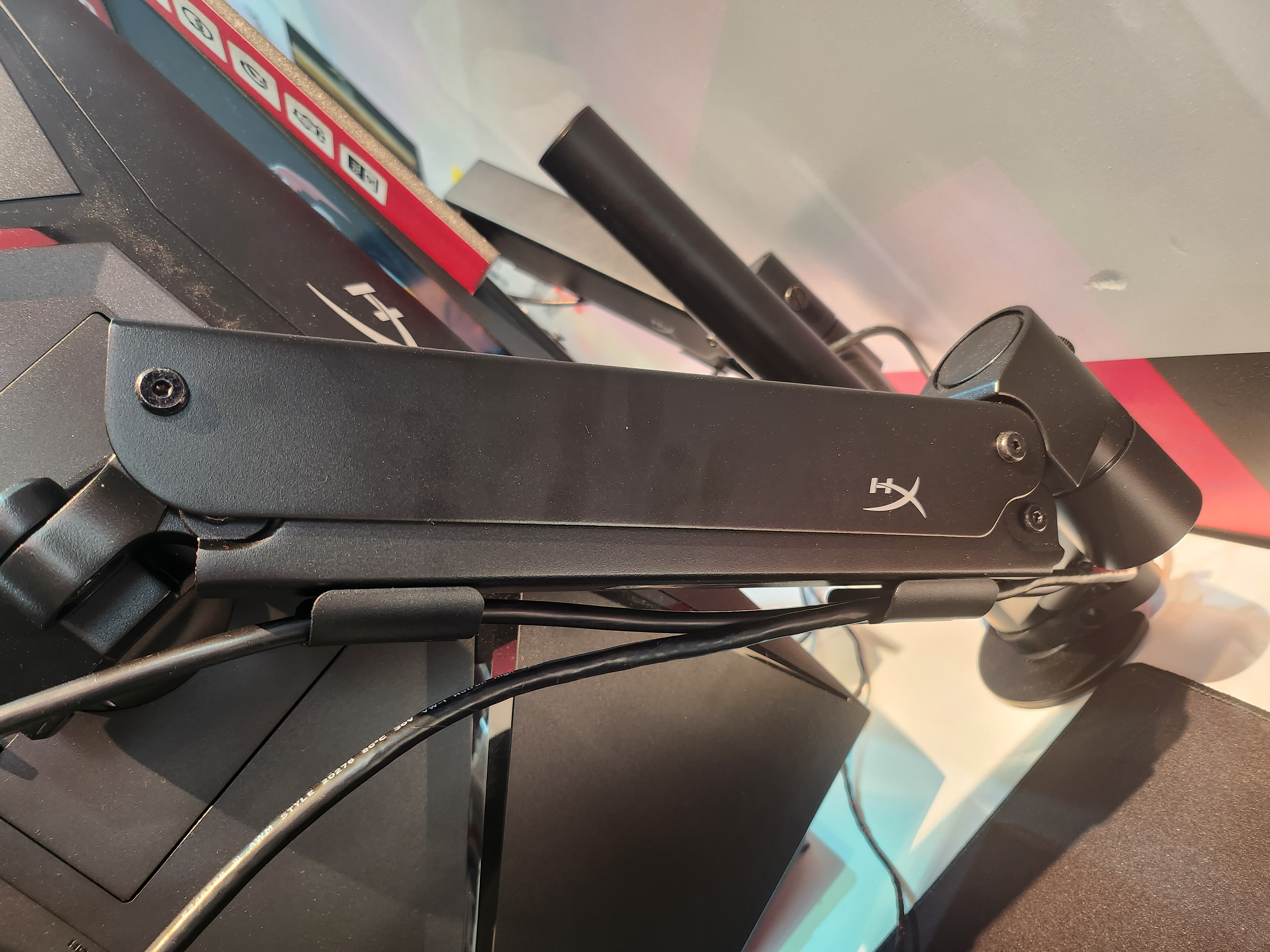Gaming monitors should come with VESA arms, not stands
The new Armada screens from HyperX prove it.
A few months ago HyperX announced its first ever line of gaming monitors to add to its lineup of PC gaming hardware, with the Armada 25 and 27 screens. This brand has been putting out some absolutely stellar pieces of kit in the past year, like the HyperX Cloud Alpha Wireless headset which is our current top pick for a wireless PC gaming headset. It's a brand that's branched out into all sorts of peripherals in recent years, and has certainly given us reason to take notice.
HyperX often adds a bit of a personal gamer focussed touch to the equipment it offers, be it a 300 hour battery in a headset, or a budget friendly streamer mic complete with RGB. Adding monitors to the lineup is the logical next step in dominating a gamers setup, and after seeing them in action at PAX Aus, it's clear that this gamer focussed mentality is present once again.
The specs of HyperX's Armada screens are clearly targeted at gamers, with the 25 prioritising refresh rate over resolution, and the 27 going for a more immersive experience. It's a fairly standard affair, and they looked good on the show floor, but it's hardly a place to really judge the fidelity of a gaming monitor. Instead, I was completely enamoured by their stands.
These new monitors from HyperX have ditched the common table stand and instead come with really lovely looking VESA mounts. Using this standard monitor support style means they'll work with other screens too, even ones you already have. They clamp onto the back of a desk, freeing up your desktop for more important things like literally anything else. PC mounts aren't new, but releasing a gaming screen with them as default, feels like an absolute game changer.

Best gaming monitor: Pixel-perfect panels for your PC
Best high refresh rate monitor: Screaming quick screens
Best 4K monitor for gaming: When only high-res will do
Best 4K TV for gaming: Big-screen 4K PC gaming
But I figured these things aren't often the cheapest solution, so I wouldn't expect much from ones that come with monitors. Especially because the prices of the new screens sit at $449 USD or $719 AUD for the HyperX Armada 25 and $499 USD or $779 AUD for the 27. It doesn't feel like you're paying much of a tax to get a mount included, so I expected them to be bare bones and maybe even a bit cheap. Instead, after seeing them in person, the VESA mounts provided with these new screens are just lovely, and I'm mad everyone isn't doing this.
The mounts I experienced on the show floor were incredibly robust. They consist of a clamp to the desk, which raises up into the main stand. From there you can add multiple arms for multi monitor setups. One stand can carry two of the larger monitors, or four of the smaller if you've got enough arms and they're just so smooth to use, even with many screens.

HyperX VESA mounts bundled with Armada screens

The thick metal is surprisingly easy to move while still feeling super strong and solid. They make the monitors feel like they weigh nothing as you spin them around into different positions effortlessly. You can rearrange your work station on the fly, and there's basically no desktop footprint. Plus if you do upgrade, it's fairly likely you can keep your setup mostly the same and just switch out the screen. You probably won't need a pesky standard screen stand again, and you certainly won't want one.
The biggest gaming news, reviews and hardware deals
Keep up to date with the most important stories and the best deals, as picked by the PC Gamer team.
After seeing how good these looked and felt to use, it's baffling to me that mounts aren't more common. Walking around the floor and looking at other monitors on stands made me feel sorry for them, and a little bit angry. Though I did see some absolutely bonkers PC builds. I'm glad HyperX has seen the light on this one, and I really hope more brands start to consider that mounted monitors are the true future for PC gaming.

Hope’s been writing about games for about a decade, starting out way back when on the Australian Nintendo fan site Vooks.net. Since then, she’s talked far too much about games and tech for publications such as Techlife, Byteside, IGN, and GameSpot. Of course there’s also here at PC Gamer, where she gets to indulge her inner hardware nerd with news and reviews. You can usually find Hope fawning over some art, tech, or likely a wonderful combination of them both and where relevant she’ll share them with you here. When she’s not writing about the amazing creations of others, she’s working on what she hopes will one day be her own. You can find her fictional chill out ambient far future sci-fi radio show/album/listening experience podcast right here. No, she’s not kidding.

